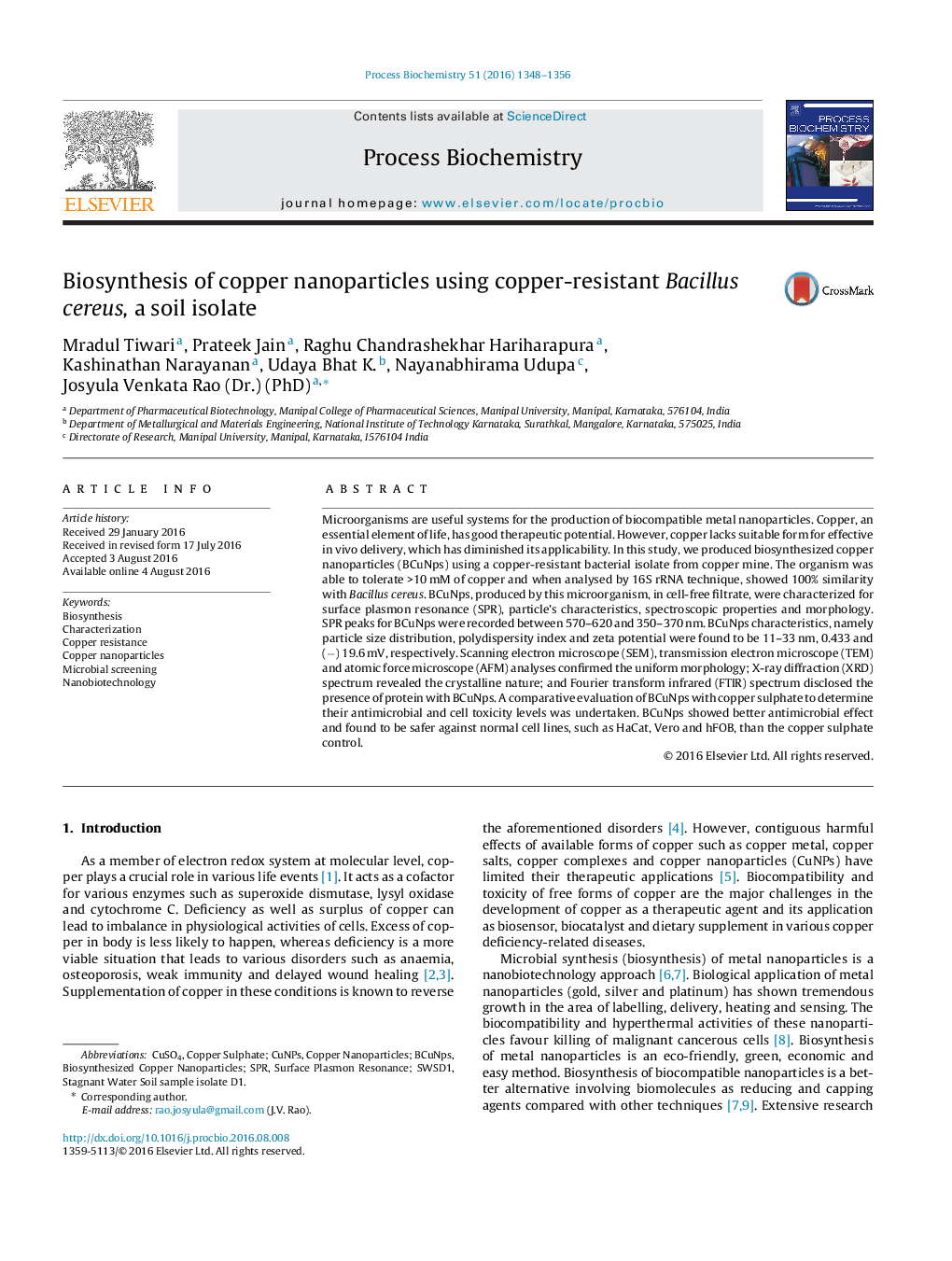| کد مقاله | کد نشریه | سال انتشار | مقاله انگلیسی | نسخه تمام متن |
|---|---|---|---|---|
| 6452985 | 1361514 | 2016 | 9 صفحه PDF | دانلود رایگان |

- A copper-resistant bacterium, Bacillus cereus was isolated from copper mine soil.
- The isolated strain was found to be resistant up to 10Â mM of copper ion concentration.
- Copper nanoparticles were produced using cell-free filtrate of grown culture.
- Biosynthesized copper nanoparticles were uniform in size and coated with proteins.
- Nanoparticles exhibited better antimicrobial and less cytotoxic effects than copper ions.
Microorganisms are useful systems for the production of biocompatible metal nanoparticles. Copper, an essential element of life, has good therapeutic potential. However, copper lacks suitable form for effective in vivo delivery, which has diminished its applicability. In this study, we produced biosynthesized copper nanoparticles (BCuNps) using a copper-resistant bacterial isolate from copper mine. The organism was able to tolerate >10Â mM of copper and when analysed by 16S rRNA technique, showed 100% similarity with Bacillus cereus. BCuNps, produced by this microorganism, in cell-free filtrate, were characterized for surface plasmon resonance (SPR), particle's characteristics, spectroscopic properties and morphology. SPR peaks for BCuNps were recorded between 570-620 and 350-370Â nm. BCuNps characteristics, namely particle size distribution, polydispersity index and zeta potential were found to be 11-33Â nm, 0.433 and (â) 19.6Â mV, respectively. Scanning electron microscope (SEM), transmission electron microscope (TEM) and atomic force microscope (AFM) analyses confirmed the uniform morphology; X-ray diffraction (XRD) spectrum revealed the crystalline nature; and Fourier transform infrared (FTIR) spectrum disclosed the presence of protein with BCuNps. A comparative evaluation of BCuNps with copper sulphate to determine their antimicrobial and cell toxicity levels was undertaken. BCuNps showed better antimicrobial effect and found to be safer against normal cell lines, such as HaCat, Vero and hFOB, than the copper sulphate control.
342
Journal: Process Biochemistry - Volume 51, Issue 10, October 2016, Pages 1348-1356